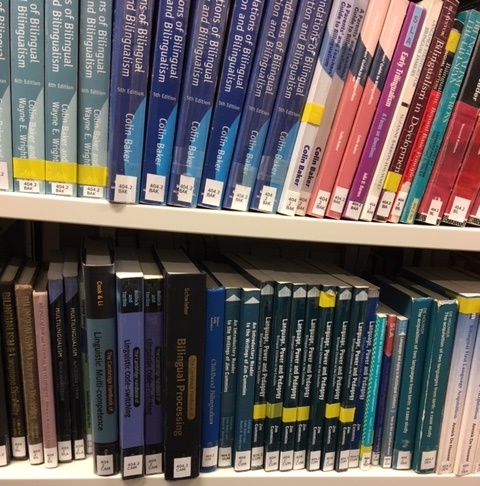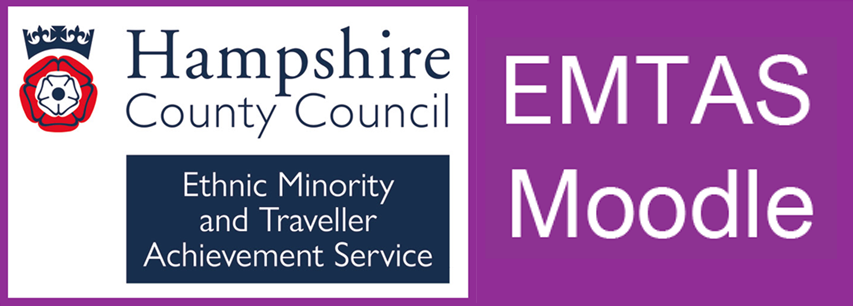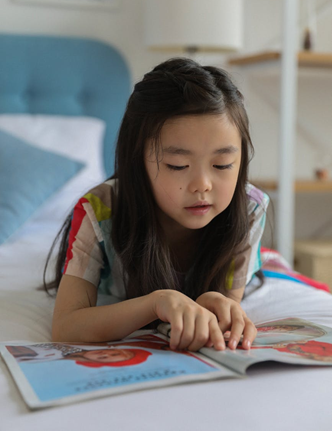Site blog
Anyone in the world
Part-time PhD student Sarah Coles is currently researching UK-born children’s lived experiences of growing up in more than one language. In this blog, she considers the place of the home language in the linguistic landscape of bilingual children from linguistic minority communities.
My research focuses on the development
of both first language (L1) and English (L2) of bilingual children growing up
as members of linguistic minority communities in an L2 context. It’s a longitudinal study that follows a
small sample of bilingual children through their first year of schooling. Using picture sequences, I elicit stories
from each child, one in L1 and another in English, their L2. This will be done once at the beginning of
the fieldwork phase and again at the end.
In this way, I hope to be able to identify how the children’s two
languages evolve over time and to document any shift in dominance from one
language to another that may occur. I
will also work with each child to explore their lived experiences of growing up
in two languages. Additional contextual
information, including the detail of their own language use, will be gathered
from the children’s parents. Ultimately,
through the children’s own narratives, I hope to deepen practitioners’
understanding of bilingual children in the Foundation Stage and to pinpoint
some practical ways in which support for such children might be tailored to
improve their engagement with their learning.
Setting the scene: two
broad-brush models of bilingual development
Across the globe, monolingualism is not the norm for all
children; exposure to more than one language and bilingual development from an
early age is in fact more prevalent than a monolingual model. Children may experience different routes in
their journeys to bilingualism dependent on their immediate family contexts. Some children will be born into households
where each parent speaks a different language and the child has access to both
from birth. This might be described as simultaneous
bilingualism. Other families may be part
of a settled immigrant community and the child may experience a monolingual
start, being exposed to a minority language at home and, later in their
development, the majority language outside of it. This would describe sequential
bilingualism.
The outcomes for children growing
up in bilingual settings are varied. Some
will go on to develop comparable skills - receptive and productive – in their
two (or more) languages and will be able to function in different contexts –
school, home, community – equally well in both/all. At the other end of the spectrum, it is just
as possible for a child to have exposure to two (or more) languages yet to
learn to speak only one themselves.
The possible impact of differential linguistic prestige
There are various factors that may
influence the course and outcome of a bilingual child’s language
development. One that seems to be significant
relates to people’s perception of the relative prestige of the child’s two – or
more - languages. A child from a linguistic
minority community may experience a monolingual start to life with exposure to
the minority language in the home from their main care-givers from birth. Later, and because it is the language of
schooling, the child is required to develop a second, additional language,
English. For such a child, the second
language is where the cultural capital resides, it being the language of the majority
community. Because of its sociocultural
dominance over the minority language, it is often the case that this second
language becomes the child’s preferred one, eventually replacing their first,
minority language.
This is a scenario experienced by
many children of Hampshire’s UK-born ethnic and linguistic minority communities. They may, in their early years, be exposed to
– let’s say – Nepali at home but later, when they start school, English. From that point onwards, families may notice
their child gradually ceases to use Nepali, preferring to respond in English
even when addressed in first language (L1).
This end result is sometimes referred to as ‘passive bilingualism’
although as De Houwer (2009) notes there is “nothing passive about
understanding two languages and speaking one”.
The possible impact of quantity of input experienced
A second consideration is the quantity
of language input experienced by the child.
In a monolingual context, the language of the home is the same as the
language of the wider community and – often – of education too. Everywhere the child goes and everyone they
meet speaks the same language. Hence the
child has multiple models of the same, single language. In contrast, linguistic minority children born
in the UK may have exposure to L1 at home and L2 (English) outside of it. Hence their overall exposure to L1 is – in
most cases - reduced.
The impact of reduced exposure to
each of the bilingual child’s two languages has been explored by researchers
with an interest in child language development.
One thing that’s emerged is the observation that a child’s lexicon (the
words they know and use) in each of their languages reflects the amount of
exposure the child has to each language – which is typically less for each
language than the total exposure to their one language experienced by a
monolingual child of similar age. When
their vocabularies in both languages are combined, however, the overall picture
of these bilingual children’s lexical development has been found to be on a par
with their monolingual peers.
Further, research has identified
that if the words known by a bilingual child are listed, only about one third
represent words that are translations of each other; i.e. two thirds of the
words a bilingual child knows in one of their languages are known only in that
language and are not shared with the child’s other language. This is likely to be directly related to differences
in the contexts in which each language is used and the communicative purpose being
served.
The possible impact of context
Some researchers have found there to be discrepancies
between UK-born bilingual children’s skills in L1 (the heritage language)
compared with those of children of comparable age but growing up in a
monolingual context. They suggest that
the L1 skills of bilingual children growing up in the UK are unlikely to reach
a level comparable to monolingual children growing up in country of origin. This, they say, is largely due to reduced
exposure to the heritage language from adult L1 models who may themselves be
experiencing language loss due to lack of use.
The overall outcome, some have suggested, is likely to be ‘incomplete L1
acquisition’.
Elsewhere in the literature, the notion that ‘incomplete first language development’ exists at all attracts criticism. Some have argued that all intergenerational first language transmission, including that which takes place in monolingual settings, evidences change. According to this view, what others may see as ‘errors’ in L1 in fact represent “normal intergenerational language change accelerated by conditions of language contact” (Otheguy, 2016). According to this view, in immigrant populations new L1 norms will naturally develop, resulting in divergence between L1 use in an L2 immersion context compared with L1 use in a monolingual, home country context. Hence context has a bearing on the language models to which a bilingual child might be exposed.
The possible impact of the language modelled
Another important consideration when it comes to a child’s
language development is the nature of the language models to which they are
exposed. Typically, linguistic minority parents
themselves do not function in a monolingual context and this can have an impact
on their everyday language practices.
The result is often an incremental increase in both code-switching (characterised
by swapping from one language to another at word/phrase level) and code-mixing
(combining grammatical structures from both languages) where in their
speech they move in a fluid, natural way between languages, swapping a word or
a phrase here and borrowing a grammatical structure there.
In the literature, code-mixing and code-switching are identified
as common linguistic practices amongst bilingual populations. Having been found to be rule-based and
systematic, code-switching and code-mixing are these days viewed in a
favourable light as opposed to the deficit view that prevailed in the past that
stigmatised them as “…the haphazard embodiments of “language confusion”
(MacSwan, 2017).
Although limited in terms of the number of empirical studies into the impact on bilingual children’s language development of code-switching and code-mixing by their parents, research suggests that bilingual adults frequently engage in these practices in interactions with their children. This is in line with trends identified in the broader sweep of studies into bilingual code-switching and code-mixing. What it means for a child growing up in more than one language is that they are likely to experience code-switching and code-mixing in language inputs modelled by family members and other significant adults around them. This may in turn prompt them to code-switch and code-mix themselves in their own speech.
Code-switching and code-mixing in
parental inputs appear to influence L1 development in children growing up as
members of language minority communities in other ways too. Some studies have found a negative
correlation, with higher rates of code-switching and code-mixing by parents resulting
in lower comprehension and production vocabulary sizes in young children. Others have identified that code-switched
input, arguably more challenging to process than input in a single language,
has positive outcomes but only for those children with greater verbal working
memory capacity who are capable of processing it.
What this means for my research
To draw to a close, the above
whistle-stop tour illustrates that bilingual language development is a complex,
multi-faceted phenomenon. It is affected
by multiple influences, each impacting in different ways and to different
degrees on the individual child in their own specific context. Through my research, I make space for a small
sample of UK-born bilingual children to explore these differences and to focus
on their first-hand experiences of growing up in more than one language. Once this has happened, any findings relevant
to practitioners working with young, UK-born bilingual learners will be shared
so that all bilingual children in Hampshire schools and settings receive a Year
R experience that is sensitive to their developmental needs.
References
De Houwer, A. (2009). Bilingual
first language acquisition (1st ed., Vol. 2). Multilingual Matters.
MacSwan, J. (2017). A Multilingual Perspective on
Translanguaging. American educational research journal, 54(1), 167-201.
Otheguy, R. (2016). The linguistic competence of
second-generation bilinguals Romance linguistics 2013 : selected papers from the 43rd Linguistic Symposium on
Romance Languages (LSRL), New York,
17-19 April, 2013, New York.
[ Modified: Thursday, 14 October 2021, 11:07 AM ]
Anyone in the world
Sarah Coles shares the second instalment of a journal-style account of her reading for the literature review and methodology chapters of her PhD thesis.

Week 3, Autumn 2018
Week three of the PhD experience and this time I dwell on second language acquisition in early childhood and whether or not there is a difference in one’s eventual proficiency in a language due to acquiring it simultaneously or successively in early childhood. Simultaneous bilingualism is where 2 (or more) languages are learned from birth, ie in a home situation where both languages are more or less equal in terms of input and exposure, a child would develop 2 first languages. I am not volunteering to try and explain this to the DfE, who seem thus far only able to comprehend home situations in which children are exposed to just the one language, but maybe some followers of this blog don’t find it such a strange notion. If so, then perhaps they are in the company of researchers who suggest children growing up in this sort of situation proceed through the same developmental phases as would a monolingual child, and they are able to attain native competence in each of their languages. I personally think there are many variables at play in any teaching and learning situation, things like motivation, confidence, opportunity, resilience and the like, and they all play a part in our lifelong learning journeys. I also think the concept of “native competence” is problematic. What do we mean by that term? How are we measuring it? Do we mean just listening and speaking or reading and writing as well? What about the different registers – does – or should - fluency in the language of the streets count for as much as academic English delivered with Received Pronunciation? Who says so? Then I consider the many monolingual speakers of English I have known; they are not all comparable in their competence in English, despite experiencing a similar sort of education as me, many of them over a similar period of time. Thus ‘native competence’ is not a fixed, immutable thing – in an ideal world, you don’t stop developing your first language skills when you meet the ARE for English at the end of Year 5, do you? ‘No’, I hear you chorus, clearly agreeing with me that it’s a moveable feast. So now even the yardstick implied by the term “native competence” is starting to look a bit flimsy and unfit for purpose. Funnily enough, it wasn’t nearly so problematic until I started all this reading.
Moving swiftly on: if, however, two or more languages are acquired successively, a very different picture emerges from the literature. It has been argued that in successive bilingualism, learners exhibit a much larger range of variation over time with respect to the rate of acquisition as well as in terms of the level of grammatical competence which they ultimately attain. In fact it is doubtful, asserts a guy called Meisel writing in 2009, that second language learners are at all capable of reaching native competence and he says the overwhelming majority of successive bilingual learners certainly does not. Controversial or what? And Meisel is not on his own here; there are many people who agree with the “critical period hypothesis” which essentially boils down to the idea that there is an optimal starting age for learning languages beyond which, and no matter how hard you try, you will never become fully proficient (whatever that means). Johnson and Newport (amongst others) say this age is between 4 and 6 years - which makes me feel a bit downhearted, like I have completely missed the bilingual boat here. Curses.
It all makes for a rather depressing prognosis for older EAL learners, those late arrivals for instance, yet we know from other research that those of our EAL learners who’ve had long enough in school in the UK can achieve outcomes at GCSE that are comparable with their English-only peers, and this can only be a Good Thing, opening doors for them as they go through their teens and into adulthood. For next time, I will try to read something more uplifting, though I expect whatever that turns out to be it will raise more questions than it answers. Keep tabs on the journey as it unfolds using the tags below.
[ Modified: Thursday, 24 October 2019, 9:42 AM ]

